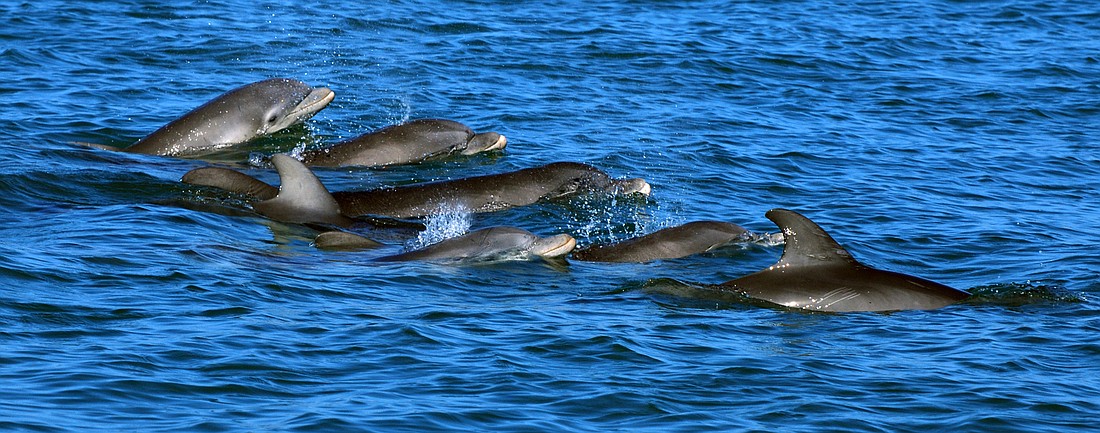- January 29, 2025
-
-
Loading

Loading

They don’t crowd the beaches or attend social functions, but dolphins are an active part of the Longboat Key community nonetheless.
“We and the dolphins breathe the same air, swim in the same water, catch and eat the same fish, and live in a complex community that includes multiple generations of relatives and long-term friends and associates,” scientist Randall Wells said. “What we do to the local ecosystem affects us all.”
Since 1989, Wells has studied the local dolphin population for the Chicago Zoological Society. The Sarasota Dolphin Research Program is housed at Mote Marine Laboratory & Aquarium but is not run by Mote.
About 170 dolphins are long-term Sarasota residents. The population typically increases around 2.1% each year. Down years are usually caused by red tide, but Wells credits the steady increase to five factors: a net ban in 1995, improvements to water quality, improved responses to dolphins in distress, the cessation of commercial dolphin collection in the 1980s and an increase in public awareness.
The net ban reduced deaths due to fishing nets and left more prey fish available in Sarasota Bay. Mote’s Stranding Investigation Program has improved detection and responses to dolphins in distress. And as the public became more aware of the threats to dolphins, threats from fishing gear, boats and pollution decreased.
These results can be seen in dolphin FB15, also known as Nicklo. Nicklo was presumed dead in 2017, but she was 67 years old at the time, making her the oldest wild dolphin documented in the world. She gave birth to at least four calves. The last born, Eve, died in 2020 at age 22.
Nicklo’s replacement as the oldest wild dolphin is FB54, a 51-year-old female. FB stands for freeze-brand, the dolphin version of a medical identification bracelet placed on the dorsal fin. It links the dolphin to its own specific medical record.
The focus of the program has changed since 1970. The initial goal was to learn about dolphin ranging and social patterns.
“Over the decades, our work has transitioned from an academic focus on what dolphins do to conservation related work to benefit dolphin populations here and elsewhere around the world,” Wells said. “We are also beginning research on dolphins offshore of Sarasota.”
Correction: The article has been updated with the correct year the Sarasota Dolphin Research Program began.